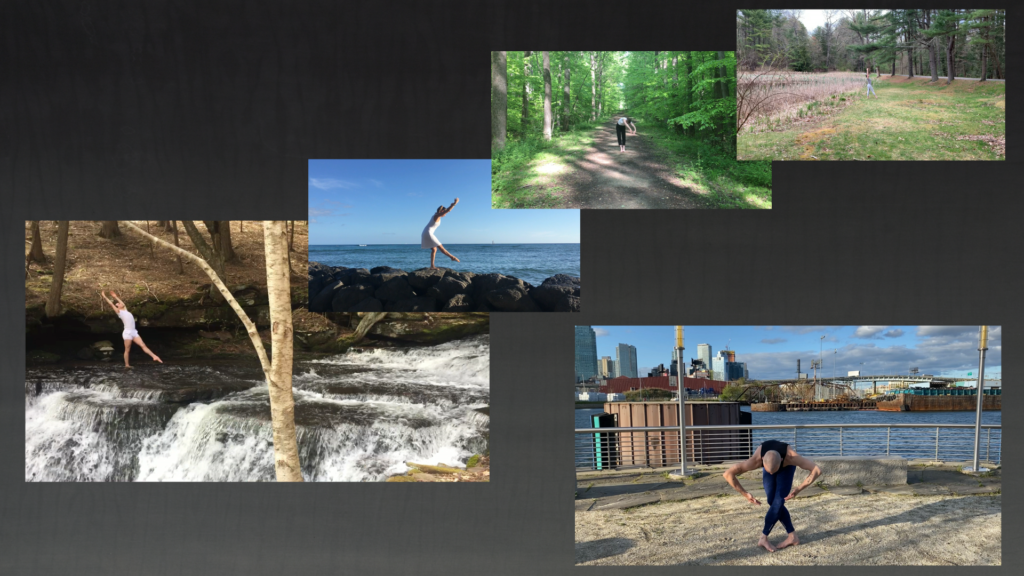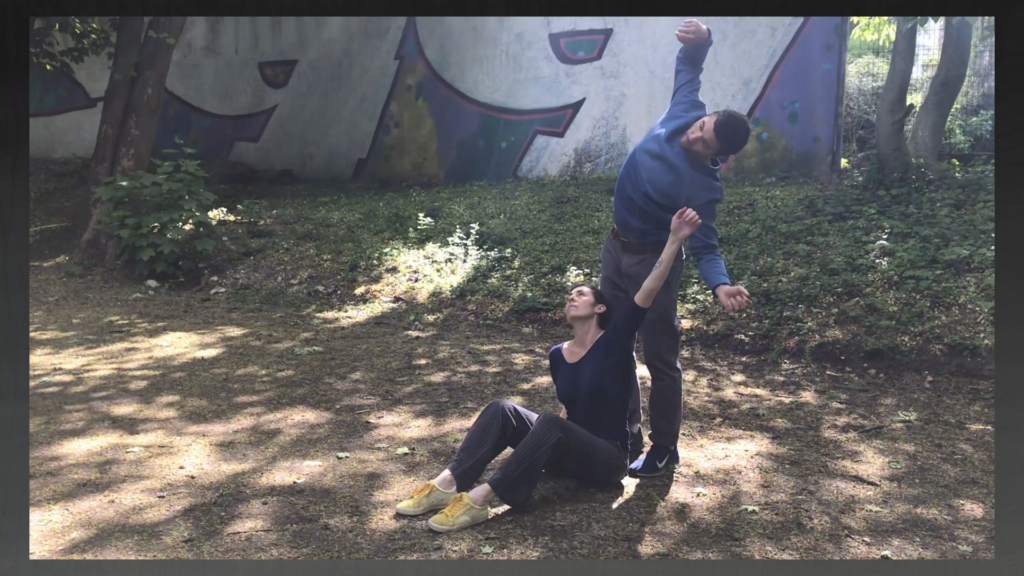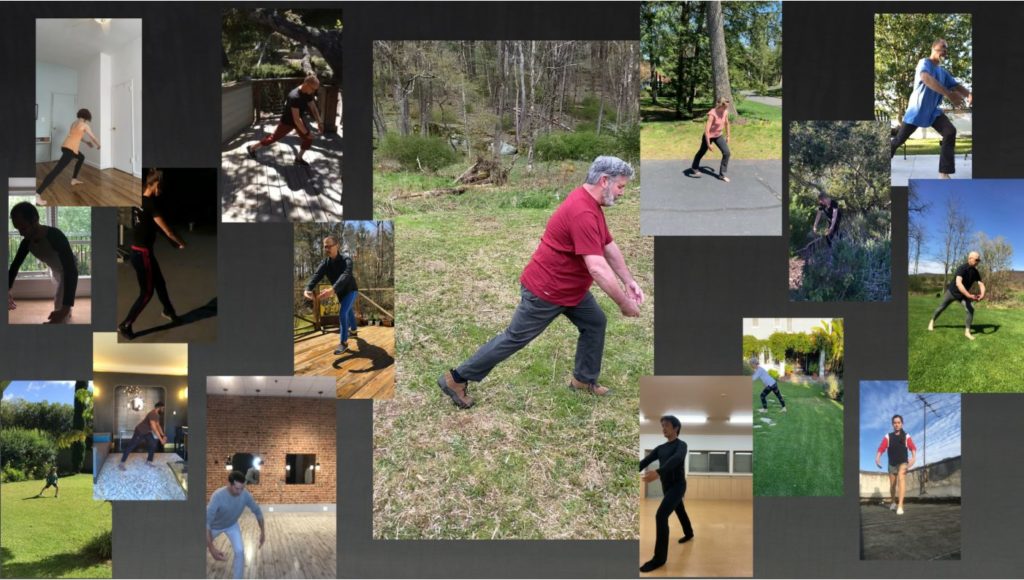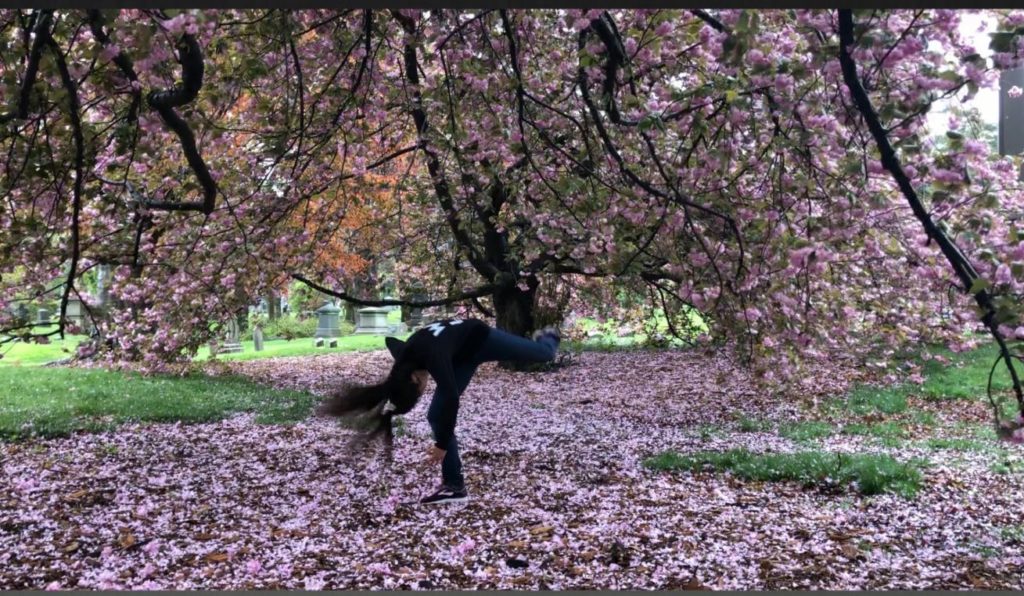
Happy 90th birthday, Jasper Johns! Many thanks for sharing your present with who knows how many thousands of people. Most of them honor you as a superb and radical visual artist, but you may be less well known to them as artistic advisor to the Merce Cunningham Dance Company from 1967 to 1976. And not just an advisor, but the guy who, like his partner Robert Rauschenberg, designed and constructed many costumes and sets for that group. It’s entirely appropriate that the “gift,” titled Event2 for Jasper Johns, which flowed onto my laptop’s screen began and ended with James Klosty’s 1969 photograph One Way to Dry a Leotard (Johns’s Target painting with a leotard hooked over one of its corners).
Event2 was supported by the Merce Cunningham Trust, the Philadelphia Museum of Art, and the Whitney Museum of American Art. I found it magnificent, imaginative, thoughtful, and grand in terms of scale. Sixty-seven former Cunningham dancers appear in it. If you add to the list of participants composers David Behrman, John King, and Christian Wolff, design consultant Davison Scandrett, Adobe After Effects Consultant Michael Cole, seven additional long-ago Cunningham dancers, and producer/performers Patricia Lent and Daniel Madoff, the creative total eventually reaches way over that.

Thanks to the ubiquitous cell phones and the help of friends, the dancers were photographed performing classroom exercises, repeating tidbits from roles they had owned or perhaps wanted to own, and (gasp) taking over one of Merce’s own roles. Here’s Gus Solomons jr. in Crisis (1960); captured in extreme closeup, he rivets his gaze on something we can’t see. That silhouetted man dancing in a room must have been Jonah Bokaer in an excerpt from Changing Steps (1973). Dylan Crossman cracks a joke by executing a duet passage from the 1984 Doubles with himself. Where was that astonishing French castle before which Thomas Caley, now of CCN-Ballet de Lorraine, performed something from CRWDSPCR (1993)? I had no trouble identifying Signals (1970) when Charles Moulton, wearing a cap, held up several fingers. It was a lot more difficult to recognize Daniel Squire performing in a hoody (Story, 1963). The only duet presented with its participants (Cheryl Thierrien and Ashley Chen) actually together was the slow, in-place, stretching that Cunningham and Barbara Dilley made so memorable in the great 1968 Rainforest.
The editing task that Madoff set himself must have been daunting. He had sent requests to all the MCDC alums three weeks prior to Johns’s April birthday. There they were, grouped by the work each had chosen, or alone, like Neil Greenberg pushing through the difficult solo he had first performed in 10’s with Shoes in 1981. And some made surprising choices. For instance Holley Farmer—wearing red tights and a startling striped coat and balancing miraculously on a stone wall framed by flowers—selected two excerpts from the 1959 Rune originally performed by Judith Dunn.
Many of the dancers appear more than once—some whisking through, others performing a full-screen solo. After a while you can pick out recurring images of Jennifer Goggans because of the slash of red on her black leotard and tights. It’s nice joke that Joseph Lennon, framed by dancing portraits of others, keeps quietly grunting out the rhythm to the sequence from Signals (1970).

The marvelous dancers appear in small rooms, in parks, in gardens, on city streets, in empty studios. A huge flowering tree appears a few times, its petals leaving a pink snow on the ground. They dance on grass, soil, gravel, stones, pavement, and in running water. Palm trees and banana leaves telegraph a warm climate. And, with a few exceptions, the movements could be from any Cunningham dance. Young or older, limber or slightly stiff, they stretch their skilled legs (mostly turned out) high and point their toes. Their feet are nimble, their bodies mostly erect or purposefully bent or twisted. They can dance at warp speed or linger over each tricky balance. I remember once thinking of Cunningham’s style as Apollonian, as opposed to, say, the Dionysian one perfected by Martha Graham (in whose company he once danced). Yet because it’s so full of oddities and small surprises, nothing that they do looks formulaic.

Madoff works magic with the contributions he received. The horizontal images slide in and out, so like postcards that if you could turn them over, they’d say, “wish you were here.” Vertical ones come to resemble doorways. Pictures may scroll in from above and disappear below. They cluster and de-cluster around an unchanging central image. They sneak in. They get snatched away (“Wait, that was Melissa Toogood!”) And it’s almost dizzying to watch Cunningham’s back exercises being performed in near unison in eight different spaces by scattered artists from various time periods, such as Jared Phillips. Michael Cole, Emily Navar, David Kulick, Megan Walker, Jim Self, Cédric Andrieux, and Nanette Hassall. Sometimes, the rate of changes slows down, and there, filling your little screen for a while, is a single dancer doing what he or she loved best and hoped you wanted to see.
For one week, you can view the piece yourself at:
https://www.youtube.com/watch?v=S0Z7gE9k-qM
It’s also below, and if anyone knows how to remove it, I’d appreciate advice.

Love your article as I loved the event. I certainly didn’t recognize most of the dancers – mostly because many of them came after my time in the active dance community.
most beautiful…. revealing, not only of the dancers, but their living space. not to mention the dancers as part of nature . wonderful editing,…. a lovely experience
Deborah, Thanks for introducing me to this video gift. Your writing made me want to watch the Event and the performance made me want to re-read your narrative. A beautiful gift for all of us! Thanks to the performers, the video team, and especially Merce.
The vital present and vibrant dance history as only the sage eagle eye of Deborah Jowitt could capture it.